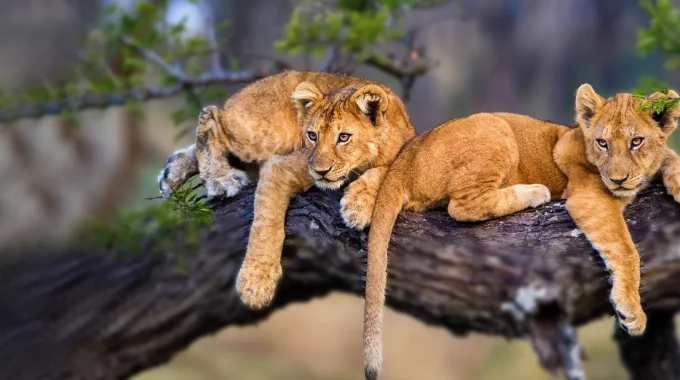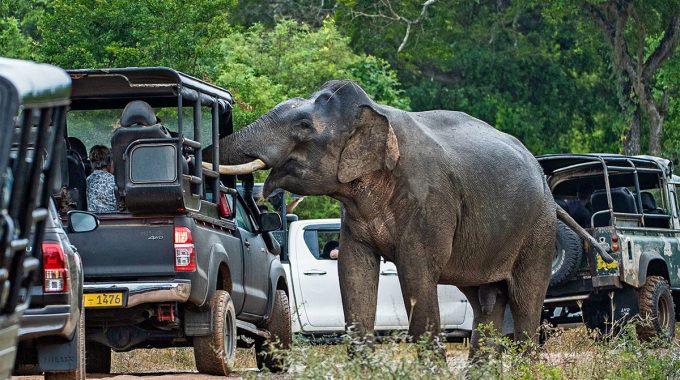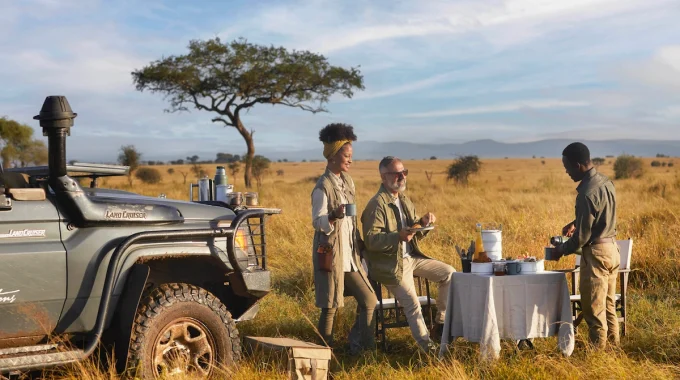Your Big African Safari Planner: What to Expect from the Top Safari Countries in 2025…
10 Famous African Tribes, their Cultures & Traditions
African culture, characterized by its fascinating tribes and traditions, is an immensely complex topic encompassing a vast continent. Discover information regarding the most renowned African tribes and traditional cultures, as well as suggested cultural tours in Africa.
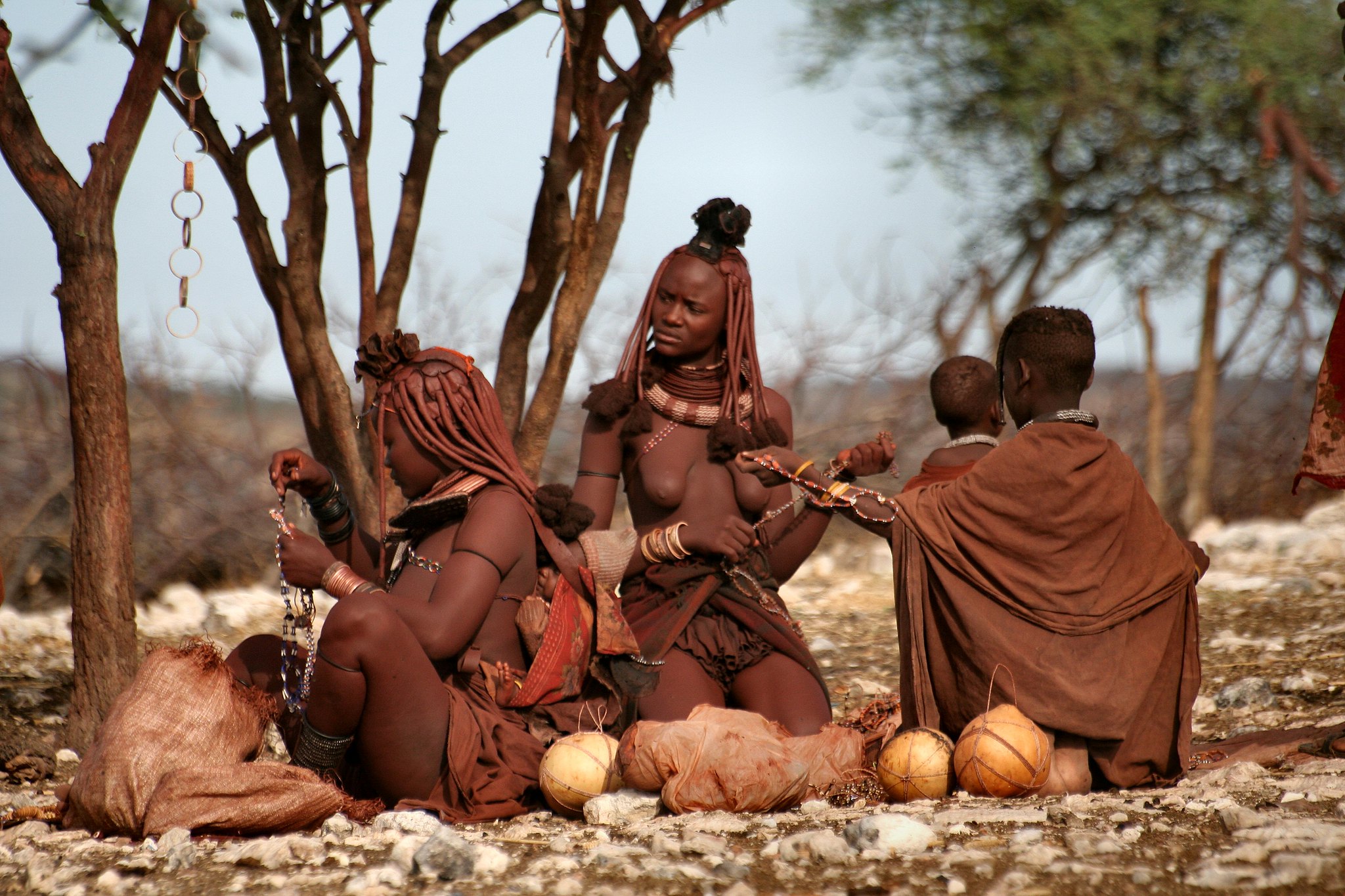
Africa is a continent rich in cultural diversity, with a history shaped by centuries of colonization, resilience, and rich traditions. Spanning an impressive area of approximately 11.7 million square miles (30.37 million square kilometers), Africa is the second-largest continent in the world. Remarkably, Africa is the only continent that straddles both the northern and southern hemispheres, giving it a wide range of climates and ecosystems. To put its size into perspective, the United States is roughly 32.4% larger than Africa, while the United Kingdom is about 0.8% smaller.
Home to more than 1.2 billion people, which accounts for over 16% of the global population, Africa is a melting pot of over 3,000 distinct tribes and ethnic groups, each with unique languages, customs, and traditions. These tribes are spread across 54 diverse nations, making generalizations about “African people” an oversimplification of the continent’s vast richness. The variety of cultures in Africa is seen in everything from food and music to religion and languages.
A notable example of this diversity is South Africa, where the constitution recognizes 11 official languages, reflecting the country’s multicultural fabric. South Africa’s “rainbow nation” concept embraces its wide range of ethnic groups, each contributing to the nation’s unique identity.
Given the continent’s cultural complexity, it is essential to explore and understand some of the well-known African tribes, each with their distinct customs and practices. These tribes have preserved their traditions through generations, and many still live in ways that reflect their ancestral lifestyles.
I have selected 10 renowned African tribes to illustrate Africa’s captivating tribal traditions and dynamic civilizations.
- Maasai tribe found in Kenya and Tanzania
- The Karimojong Tribe of Uganda
- Hadza tribe of northern Tanzania
- Zulu tribe of South Africa
- Karo Tribe of Ethiopia
- Himba tribe of northwest Namibia
- Samburu tribe of Northern Kenya
- Xhosa tribe of South Africa
- Southern Ndebele tribe of South Africa
- San tribe (Khoisan or bushmen people) of Southern Africa
Maasai tribe found in Kenya and Tanzania
The Maasai are a semi-nomadic ethnic group primarily found in Kenya and Tanzania in East Africa. Known for their rich culture, unique traditions, and striking appearance, the Maasai are one of the most well-known indigenous groups in Africa. Their lifestyle, history, and practices are deeply connected to the land and their pastoralist way of life, which revolves around cattle.
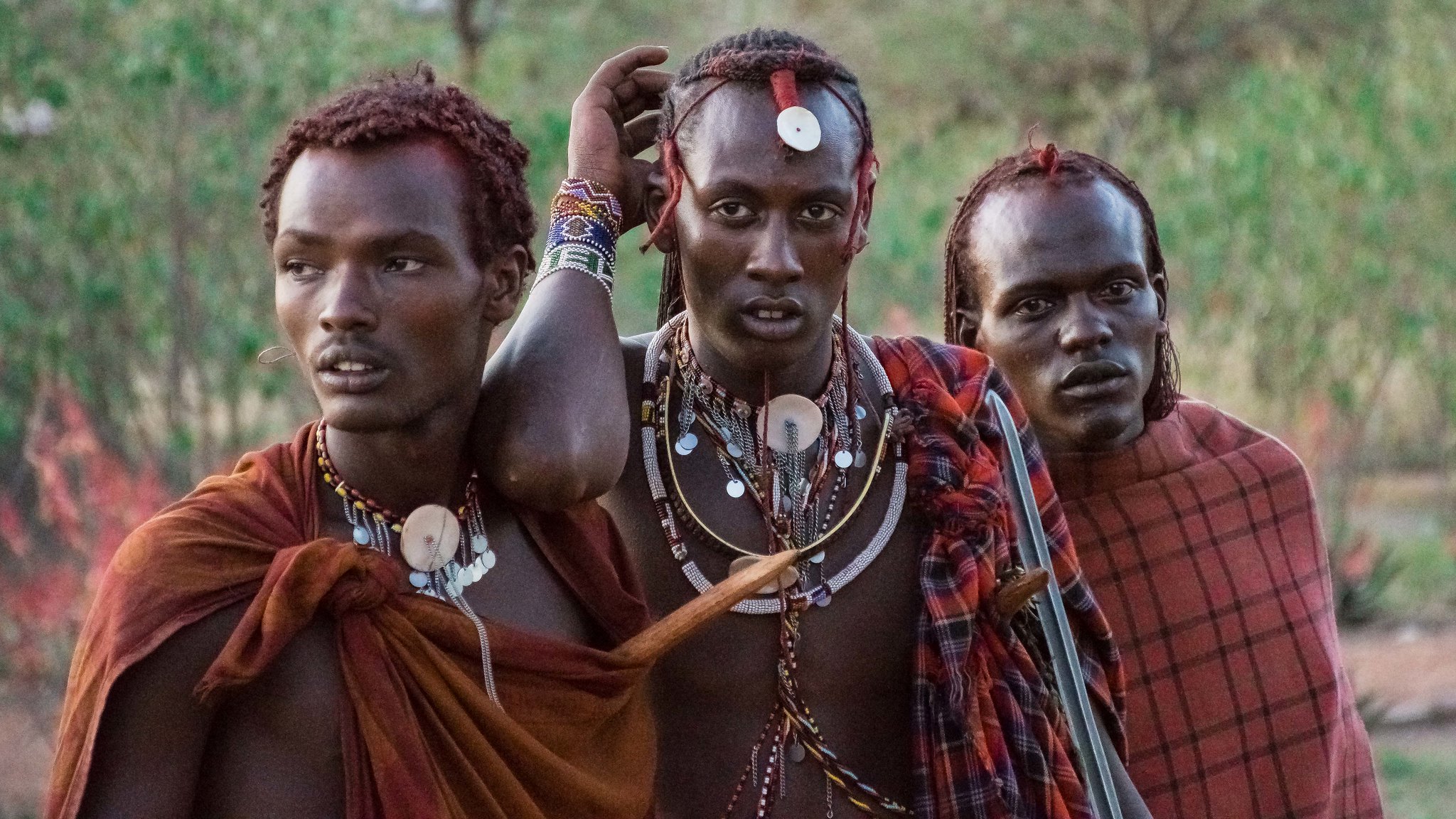
Culture and Traditions
- Language: The Maasai speak Maa, a language that belongs to the Nilotic language family. However, Swahili and English are also widely spoken, especially in urban areas and for communication with outsiders.
- Clothing: The Maasai are instantly recognizable by their distinctive Shúkà, a red-checked or striped cloth that is worn wrapped around the body. The color red is significant in Maasai culture as it symbolizes strength, bravery, and the connection to their heritage. They also wear beadwork, including necklaces, earrings, and arm bands, which are often used to represent social status, age, and achievements.
- Cattle: Cattle are central to Maasai life. The Maasai view cattle as a symbol of wealth and status. Cattle are not only a food source (milk, meat), but they are also used in rituals, weddings, and as a form of currency. Traditionally, a Maasai man is expected to accumulate cattle in order to prove his wealth and standing in the community.
- Rites of Passage: One of the most significant aspects of Maasai culture is their rituals of passage, marking transitions in life. These include circumcision, initiation into adulthood, and marriage. For boys, the transition into manhood is marked by a ceremony involving circumcision and sometimes the shaving of hair. Girls also undergo initiation, which marks their passage into womanhood. This usually includes ceremonies, and the young women are taught their roles as wives and mothers.
- Social Structure: The Maasai society is traditionally structured around age-sets and clans. The age-set system groups people into cohorts, based on the time of initiation, and each age-set will have a distinct role or responsibility in the community. Elders hold the highest social authority, and their advice is highly valued in decision-making processes. Younger men are expected to protect the community and manage the herds.
- Marriage: Marriage in Maasai culture is often arranged, and a dowry of cattle is given to the bride’s family. A Maasai man typically marries more than one wife, with the number of wives often dependent on the wealth (mainly cattle) that he can afford.
- Religion and Beliefs: Traditionally, the Maasai practice a form of monotheism, believing in a god called Enkai or Engai, who is associated with fertility, creation, and the rain. The Maasai believe that their god resides in the skies and governs both the welfare of their cattle and the overall well-being of the people. Their rituals and ceremonies often invoke Enkai for protection and blessings. In addition to these beliefs, Maasai have a deep spiritual connection to their land and the animals they care for.
History
The history of the Maasai is rich and complex. The Maasai are believed to have migrated from the Nile Valley in the north to their present homeland in Kenya and Tanzania around the 15th century. They were originally part of a larger Nilotic-speaking group, but over time they developed a distinct culture centered around cattle herding.
The Maasai were originally a powerful and expansive group, and they established a vast territory that spanned much of southern Kenya and northern Tanzania. They were skilled warriors and often engaged in conflicts with neighboring groups to protect their land and livestock.
During the colonial era, the Maasai experienced significant changes. The arrival of European colonizers led to the loss of much of their land, and their traditional lifestyle was severely disrupted. British colonialists especially enforced land policies that restricted the Maasai to smaller areas, affecting their pastoral practices. The Maasai were also affected by the introduction of new diseases, such as smallpox and rinderpest, which devastated their cattle population.
Despite these challenges, the Maasai were able to retain much of their cultural identity. While many Maasai people have since adapted to more modern ways of living, including education and urbanization, the traditional ways of life still hold strong in many communities.
Modern-Day Maasai
In the present day, the Maasai are spread across both Kenya and Tanzania, and their population is estimated to be around 1 million people. Although some Maasai have moved to urban areas and embraced more modern lifestyles, many still practice their traditional pastoralism. However, they face numerous challenges, including:
- Land Conflicts: Many Maasai communities struggle with land rights, especially due to the pressures of urbanization and commercialization. Disputes with government authorities and private landowners have led to conflicts over grazing land and territorial boundaries.
- Education: The Maasai value education, but many still face barriers in accessing quality schooling, especially in rural areas. In some communities, the Maasai have made strides in educating their children, while others remain more isolated.
- Climate Change: As a pastoralist society, the Maasai depend heavily on the land and the grazing of cattle. Climate change has led to increased droughts, unpredictable weather patterns, and land degradation, which have made it more difficult to maintain their traditional livelihood.
- Integration with Modernity: While many Maasai are integrating into modern economies through trade, tourism, and other professions, the pressure to maintain their traditional way of life in the face of globalization remains a delicate balancing act.
The Maasai and Tourism
Tourism plays a significant role in the modern economy for some Maasai communities, particularly those who live near national parks and reserves like the Maasai Mara in Kenya and Serengeti in Tanzania. These areas attract tourists who come to witness the annual Great Migration of wildebeest and zebras, with Maasai guides often leading safaris. Additionally, Maasai culture itself—particularly their dances, beadwork, and crafts—draws tourists interested in learning about their way of life.
Maasai and Women’s Roles
While traditional Maasai society has been patriarchal, there have been significant changes in the roles of women, particularly in the modern era. While many women continue to be responsible for household chores and childcare, some Maasai women are now pursuing education and career opportunities, and women’s rights groups are working to address issues like female genital mutilation (FGM) and early marriages.
In recent years, there has been a push within the Maasai community to empower women and give them more voice and rights within society.
Conclusion
The Maasai are a resilient and proud people with a deep connection to their culture, land, and livestock. Their history is one of migration, resilience in the face of colonialism, and continued adaptation in the modern world. While challenges remain, including land disputes, climate change, and the integration of traditional and modern lifestyles, the Maasai continue to preserve much of their cultural identity, making them one of the most recognizable and enduring cultures in Africa.
The Karimojong Tribe of Uganda
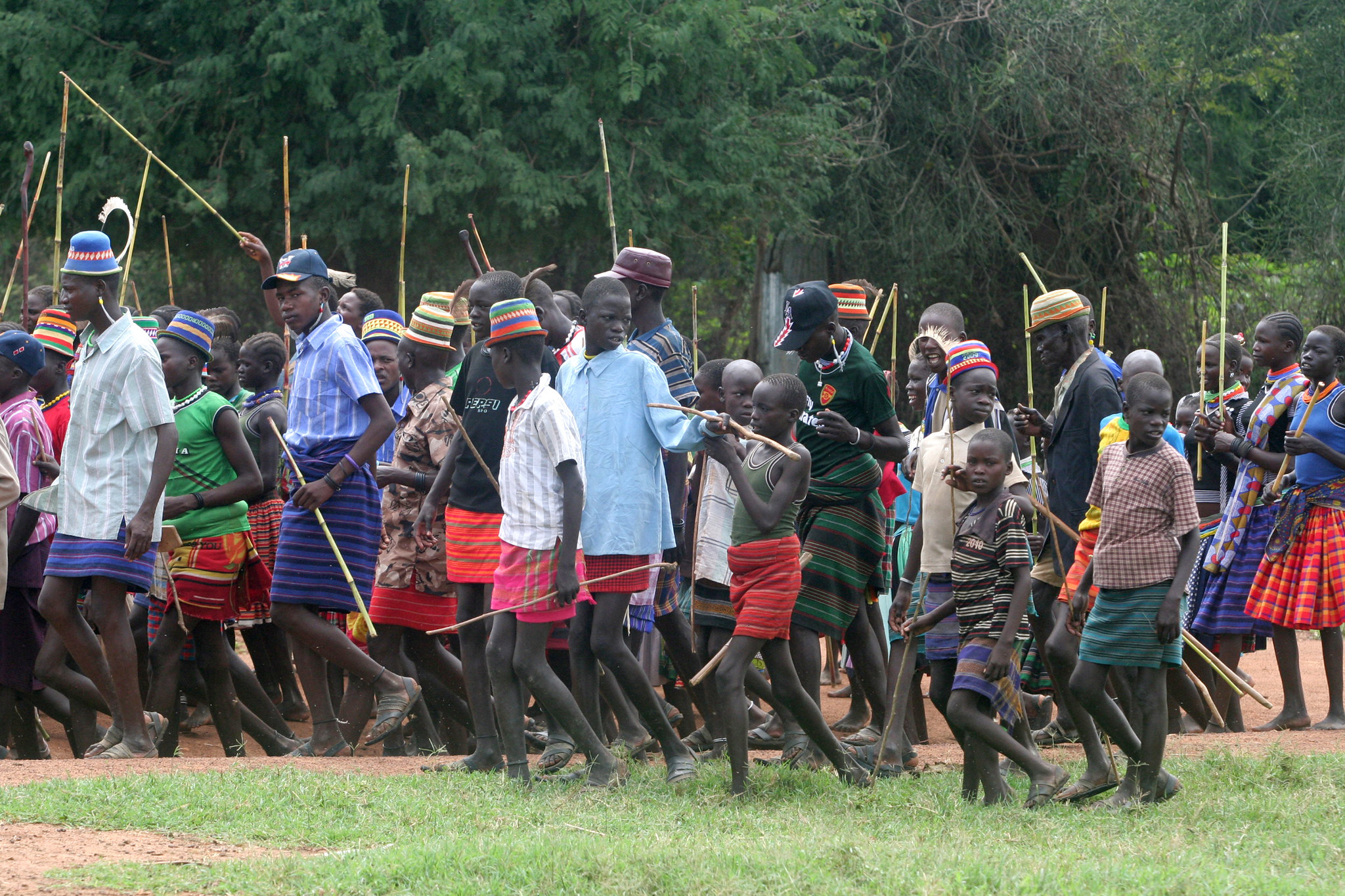
The Karimojong are an ethnic group primarily found in the northeastern region of Uganda, particularly in Karamoja, a semi-arid area. They are closely related to the Maasai and share many cultural traits, as both groups belong to the Nilotic language family. The Karimojong are known for their pastoral lifestyle, which revolves around cattle, and their rich cultural heritage.
Culture and Traditions
- Language: The Karimojong speak Karimojong, a dialect of the Kalenjin language, which is part of the Nilotic language group. Many Karimojong also speak Swahili and English, especially in urban areas and for communication with outsiders.
- Cattle and Livelihood: Like many other Nilotic groups, cattle are central to the Karimojong way of life. Cattle are more than just a source of food (milk and meat); they are symbols of wealth, status, and pride. Traditionally, a Karimojong’s wealth and social standing are measured by the number of cattle they own. Cattle are also used in social transactions such as marriages, with dowries often being paid in cattle.
- Traditional Clothing: The Karimojong’s traditional clothing is simple but distinctive. Men often wear a shuka (a type of cloth) wrapped around their body, and women typically wear skirts made from hides or woven materials. Both men and women adorn themselves with beadwork and jewelry, including necklaces, bracelets, and anklets. The beadwork is often symbolic, denoting the wearer’s age, social status, or marital status.
- Rites of Passage: The Karimojong place a great deal of importance on rites of passage, particularly circumcision, which marks the transition from childhood to adulthood. For boys, circumcision is a critical part of the initiation process into manhood. This ceremony is typically followed by a period of seclusion where the young men are taught important cultural values, survival skills, and leadership. For girls, the rites of passage include female circumcision, which, although controversial, remains practiced in some communities.
- Social Structure: Karimojong society is organized in a patriarchal structure, with elders holding significant authority. Elder men are regarded as the decision-makers in the community, and they are responsible for the administration of justice and the resolution of disputes. The social structure is also organized around clans, with each clan playing an essential role in the social dynamics and leadership within the community.
- Marriage: Marriage among the Karimojong is often arranged by parents or elders, and the exchange of cattle as a dowry is an essential part of the marriage process. A man typically marries more than one wife, and the number of wives is often tied to the number of cattle he possesses. Women in Karimojong society are traditionally expected to manage household duties, raise children, and care for the livestock.
- Religion and Beliefs: The Karimojong practice a form of animism and have traditional beliefs that focus on spirits and the power of nature. They believe in a supreme god called Akuj (or Atai) who is the creator and the source of all life. The Karimojong also worship ancestors and spirits, believing that these spirits can influence daily life, health, and prosperity. Rituals and sacrifices are performed to appease spirits, ask for blessings, or seek protection from harm. In recent years, Christianity has also made inroads into Karimojong communities, though many still retain strong ties to their traditional beliefs.
- Music and Dance: Music plays a significant role in Karimojong culture. They have traditional songs and dances that are performed during celebrations, rituals, and social gatherings. Drums and other traditional instruments are commonly used, and dance is a vital form of expression, often involving energetic movements that showcase strength and unity.
History
The Karimojong are part of the larger Nilotic ethnic groups that migrated to the northeastern regions of Uganda from the Sudan and Ethiopia. Their ancestors are believed to have moved into the Karamoja region around the 14th century, though exact dates are uncertain.
Throughout their history, the Karimojong have been largely semi-nomadic pastoralists, relying on their herds of cattle for sustenance and wealth. Their lifestyle has made them resilient, as they have adapted to the harsh, semi-arid environment of Karamoja, which is prone to droughts and resource scarcity.
During the colonial period in the early 20th century, the British sought to impose control over the Karimojong, like many other ethnic groups in Uganda. However, the Karimojong were relatively resistant to external control, and their pastoral lifestyle, which was centered around livestock mobility, made it difficult for the colonial administration to fully assert authority over the region.
In post-colonial Uganda, the Karamoja region remained one of the least developed areas, with minimal infrastructure and limited access to education and healthcare. This underdevelopment, coupled with the region’s isolation, contributed to the Karimojong being marginalized by the broader Ugandan society.
Challenges in the Modern Era
- Conflict and Violence: The Karimojong have historically been involved in raiding for cattle, often targeting neighboring ethnic groups. This raiding culture, while an integral part of their past, has led to conflicts, both internal and external. Over time, however, the Ugandan government and local leaders have worked to reduce this violence through disarmament programs and peacebuilding efforts.
- Land and Livelihood: In recent decades, the Karimojong have faced increasing challenges due to the loss of traditional grazing lands, conflicts with other ethnic groups, and the pressures of population growth. The transition from a semi-nomadic to a more sedentary lifestyle has been difficult for many families, as they rely heavily on livestock farming.
- Climate Change: The Karamoja region is one of the driest in Uganda, and the community’s reliance on pastoralism has made them especially vulnerable to climate change. Prolonged droughts and changing weather patterns have resulted in cattle deaths and increased food insecurity. These challenges have exacerbated poverty and displacement, forcing many Karimojong people to seek alternative livelihoods in urban areas.
- Education and Health: The Karimojong have historically had limited access to formal education and healthcare, which has hindered their integration into the wider Ugandan society. However, efforts have been made by the government and non-governmental organizations (NGOs) to improve education and healthcare facilities in the Karamoja region. These initiatives are slowly helping to improve the standard of living and provide more opportunities for younger generations.
Karimojong and the Future
Despite the challenges they face, the Karimojong remain a resilient and proud community, with strong cultural ties to their heritage. As the world modernizes, there is a growing recognition of the need to preserve their traditions while also embracing education, health care, and sustainable development.
Efforts to improve living conditions in the Karamoja region are ongoing. These include initiatives to improve water access, promote agriculture, and empower women and youth. Additionally, the government and various NGOs are working to preserve the Karimojong’s cultural identity while providing modern opportunities for their children and younger generations.
Conclusion
The Karimojong are an important and unique ethnic group in Uganda, with a rich cultural heritage rooted in pastoralism, rituals, and community. Although they face numerous challenges in the modern era, including climate change, conflict, and underdevelopment, the Karimojong continue to maintain strong cultural traditions. Their resilience and deep connection to their land and cattle make them an essential part of Uganda’s diverse cultural fabric. With continued support for education, infrastructure, and peacebuilding, the Karimojong people can navigate the future while retaining their rich heritage.

